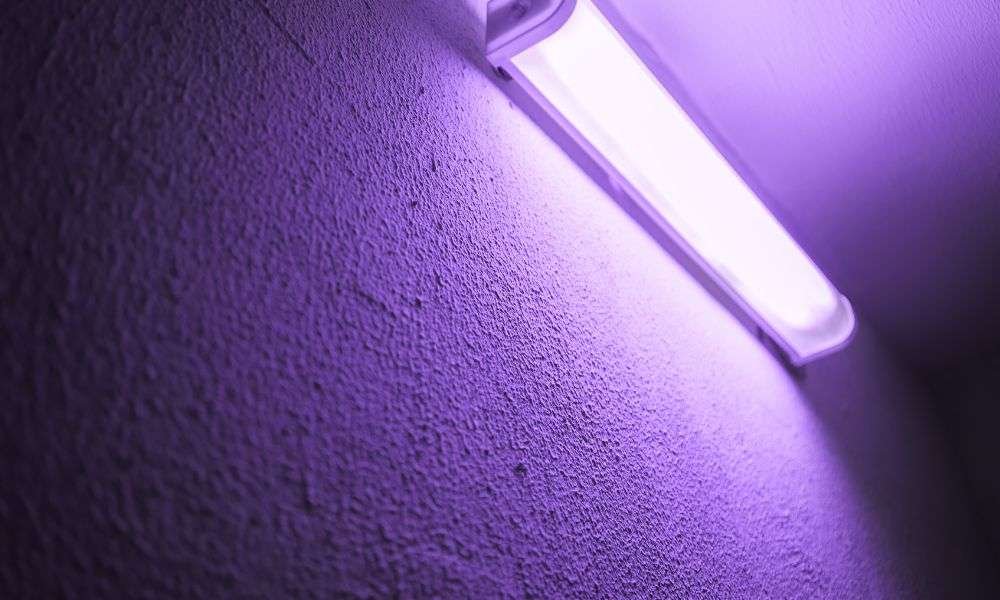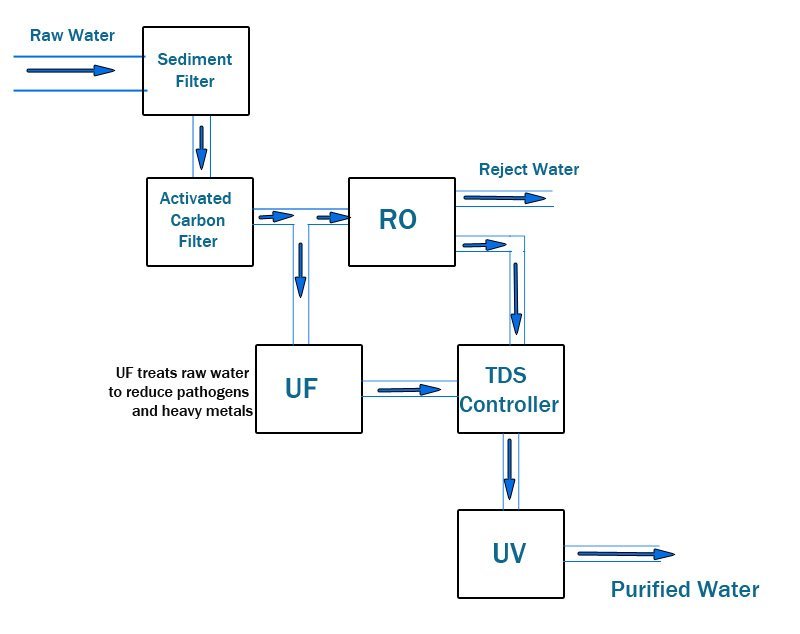With groundwater polluted with pesticides, industrial wastes and septic systems, water purifiers are a necessity in India. But when you go about buying a new water purifier, you are likely to be bombarded with numerous jargon that can throw you off. So, here, we attempt to help you understand the key differences between various purification technology and what type of situation they are best suited for.
UV In Water Purifier

UV refers to an UltraViolet chamber through which water is passed to kill bacteria, viruses and other germs in it. UV light produces electromagnetic energy that causes a chemical reaction in the RNA and DNA of the organism and kills them.
The majority of water purifiers have a UV chamber as it plays an important role in sanitizing water. While some water purifiers have just UV technology, some have UV+UF and some have UV, UF and RO technology incorporated into one.
A water purifier with just UV or UV+UF technology is apt when you have a water supply from a well or municipality. They are usually pure, free of contaminants and have a TDS ( Total Dissolved Salts) level of less than 200 ppm. All you need is a final layer of purification just to be sure.
UF in Water Purifier
UF refers to Ultra Filtration. Some brands also use the term MF which stands for Micro Filtration. Here, water is passed through a UF membrane which has a pore size of 0.02 – 0.05 microns. This is not sufficient to remove any dissolved solids in water. But, it is apt for removing suspended large particles. The main advantage of UF is that it doesn’t waste water like RO.
As mentioned earlier, UV+UF purifiers are apt for homes with municipal water supply. In such cases, the UF membrane helps get rid of any residue that may have gotten from the water pipeline.
In RO water purifiers, the UF membrane performs different functions depending on the position it is placed in. In certain water purifiers, water flows first through the UF membrane and then to the RO membrane. An RO membrane actually has a much lower pore size of 0.0001 microns and would capture anything that a UF membrane captures. But, RO membranes are quite expensive. If you leave the whole purification to just the RO membrane, its lifespan would be much lesser. Not to mention, water wastage would be higher too.
In some models of water purifiers, the UF membrane is placed in such a way that it treats the raw water that mixes with the RO-purified water to adjust the TDS. You may have read that many water purifiers have MTDS ( Manual TDS controller). In such water purifiers, raw water, after passing through the carbon filter splits into two. One part goes through the RO membrane and the other passes through a UF membrane. The part that goes through the RO membrane would have extremely low to nil TDS. So, to increase the TDS to an acceptable level, the former part is mixed with the RO water. As it passes through UF, pathogens and heavy metals are removed and the output water is free of contaminants.

RO In Water Purifier
RO refers to Reverse Osmosis. RO membrane has extremely small pore size of 0.0001 microns. It requires a pump as a minimum water pressure is required to push water through the RO membrane. But, a drawback is that it wastes a lot of water. Depending on the model, for every litre of purified water, it wastes around 3-4 litres of water.
The main advantage of RO is that it is the only option viable on a domestic level that can remove dissolved salts. Dissolved salts include heavy metals, calcium, magnesium, carbonates, chlorides, flurides, sulphates etc.
As RO membranes reduce the TDS to close to nil, raw water after passing through carbon filter is mixed with the RO water to make it to a potable level. Else, water is passed through an additional mineralizer cartridge to increase the levels of essential minerals like calcium and magnesium.
An RO water purifier is essential if the water supply at your place has a TDS level of more than 300-500. Even if the TDS level is low, sometimes level of sulphates and flurides may be higher than acceptable range due to underground pollution. In such case too, an RO water purifier will be needed.
RO water purifiers usually last for about a year or for 6000 litres. Most RO purifiers need annual change of RO, UF and other membranes which costs about Rs. 4500.
| Performance | UV | UF | RO |
|---|---|---|---|
| Kills germs | ✔ | ⨯ | ⨯ |
| Removes dissolved salt | ⨯ | ⨯ | ✔ |
| Removes pathogens | ⨯ | ✔ | ✔ |
| Needs electricity | ✔ | ⨯ | ✔ |
| Water Pressure | Not required | Not required | Required |
| Membrane Size | NA | 0.02 – 0.05 microns | 0.0001 microns |
| Removes suspended impurities | ⨯ | ✔ | ✔ |
